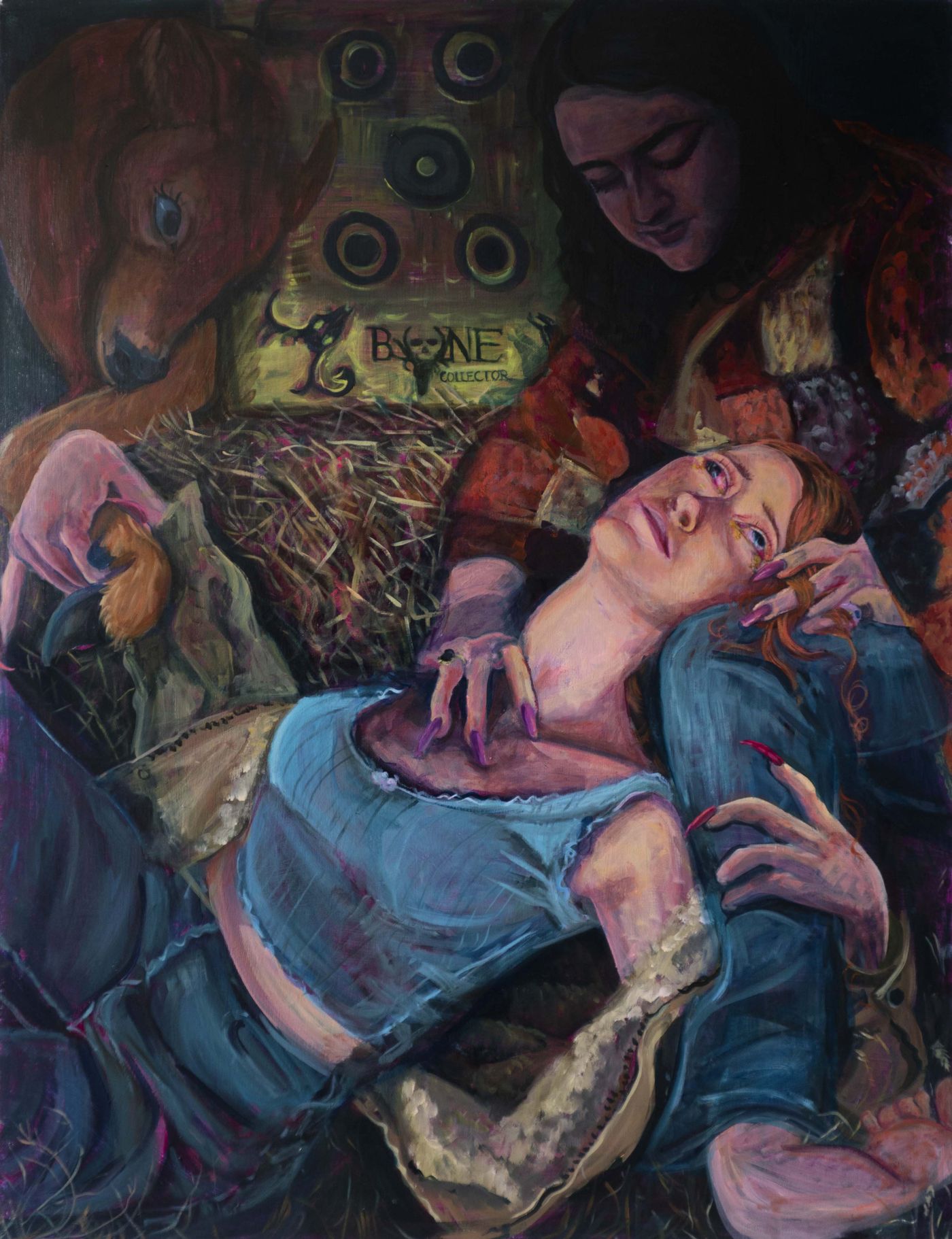
Backwoods Penitent Mary Magdalene with Pink Eye, 2022. Acrylic and oil on canvas; 36 x 48 in. Photo: Allison Minto.
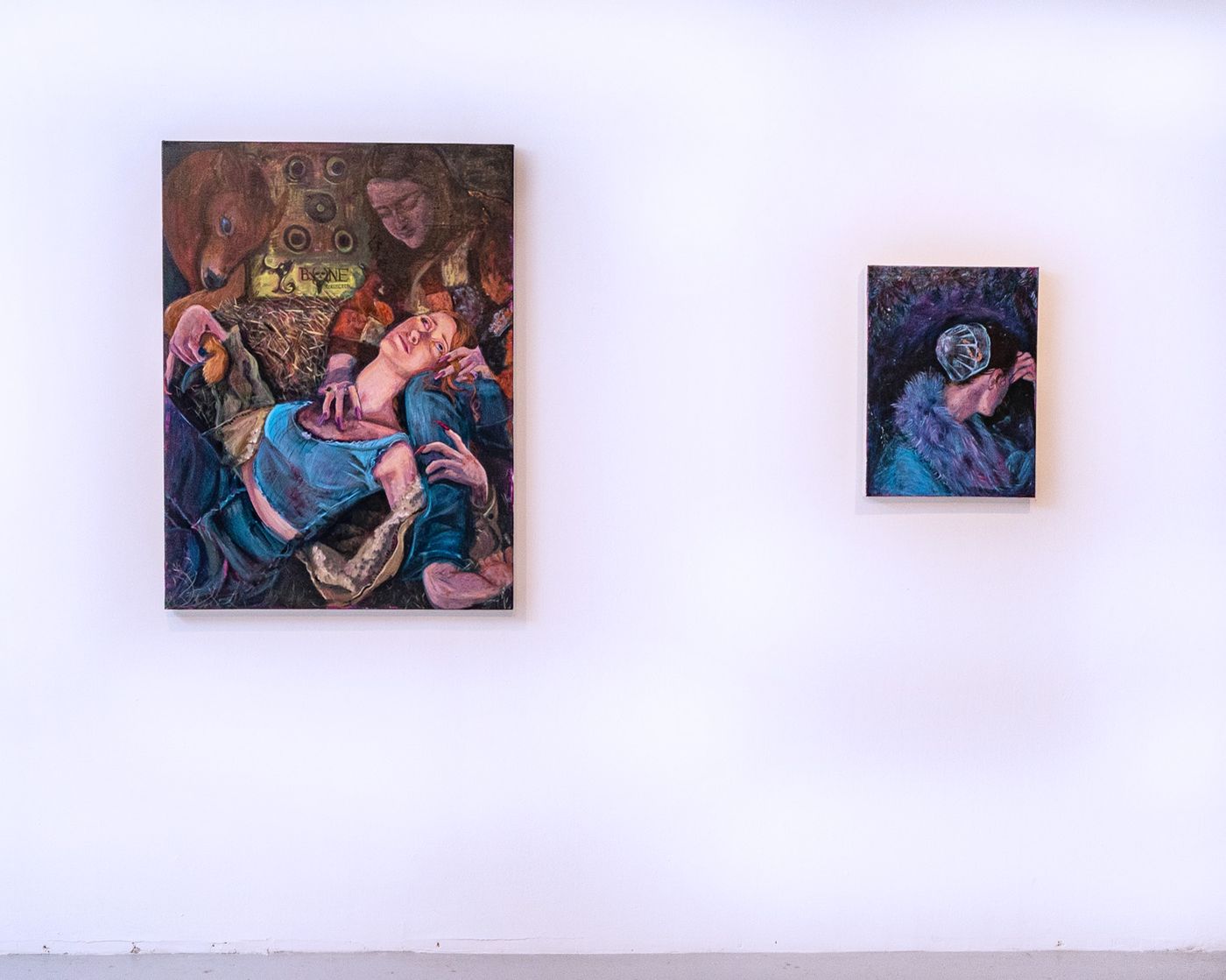
Installation view, 2022. Photo: Allison Minto.
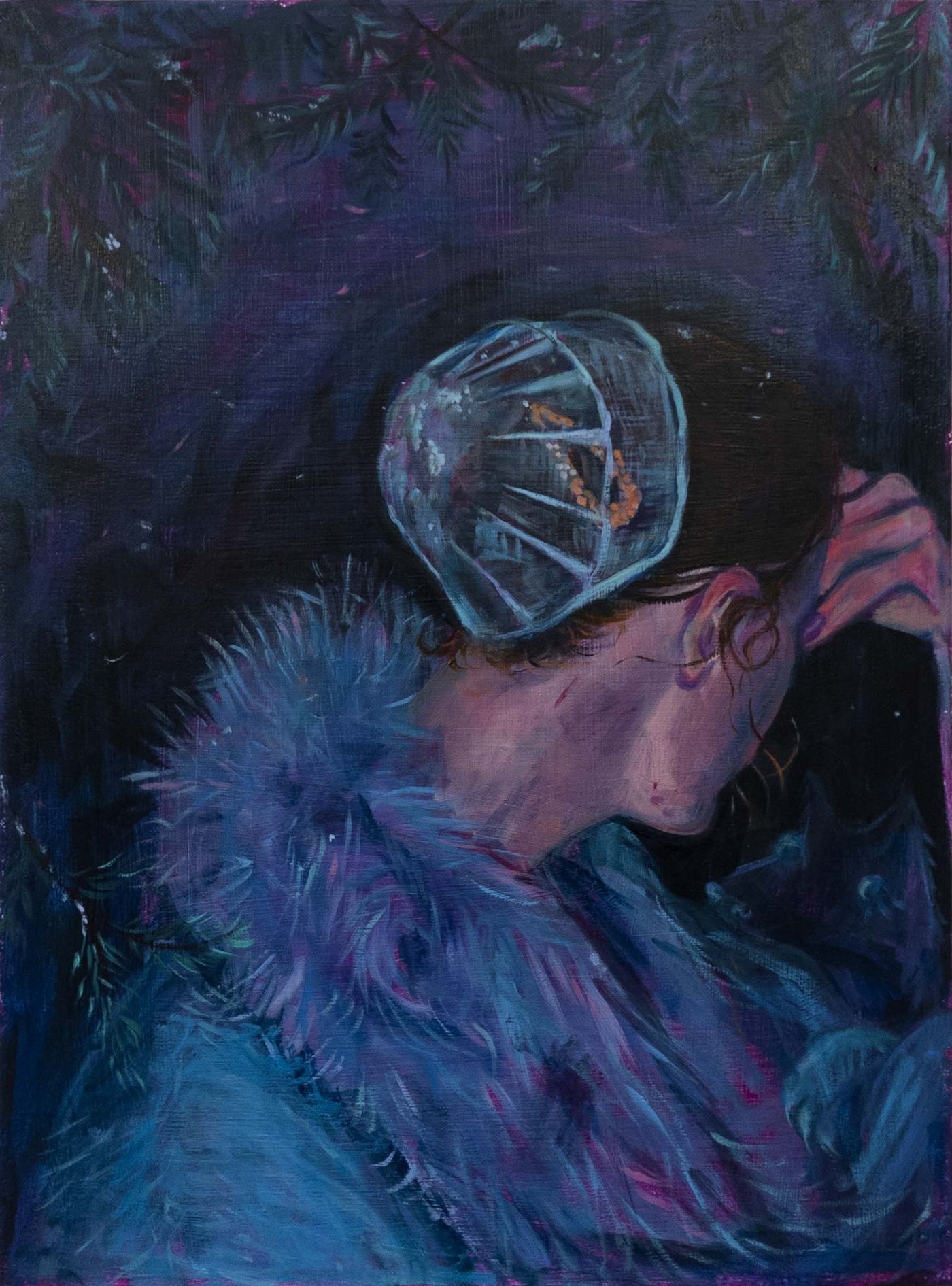
Here in Time, There in Eternity, 2022. Acrylic and oil on canvas; 18 x 24 in. Photo: Meghan Olson.
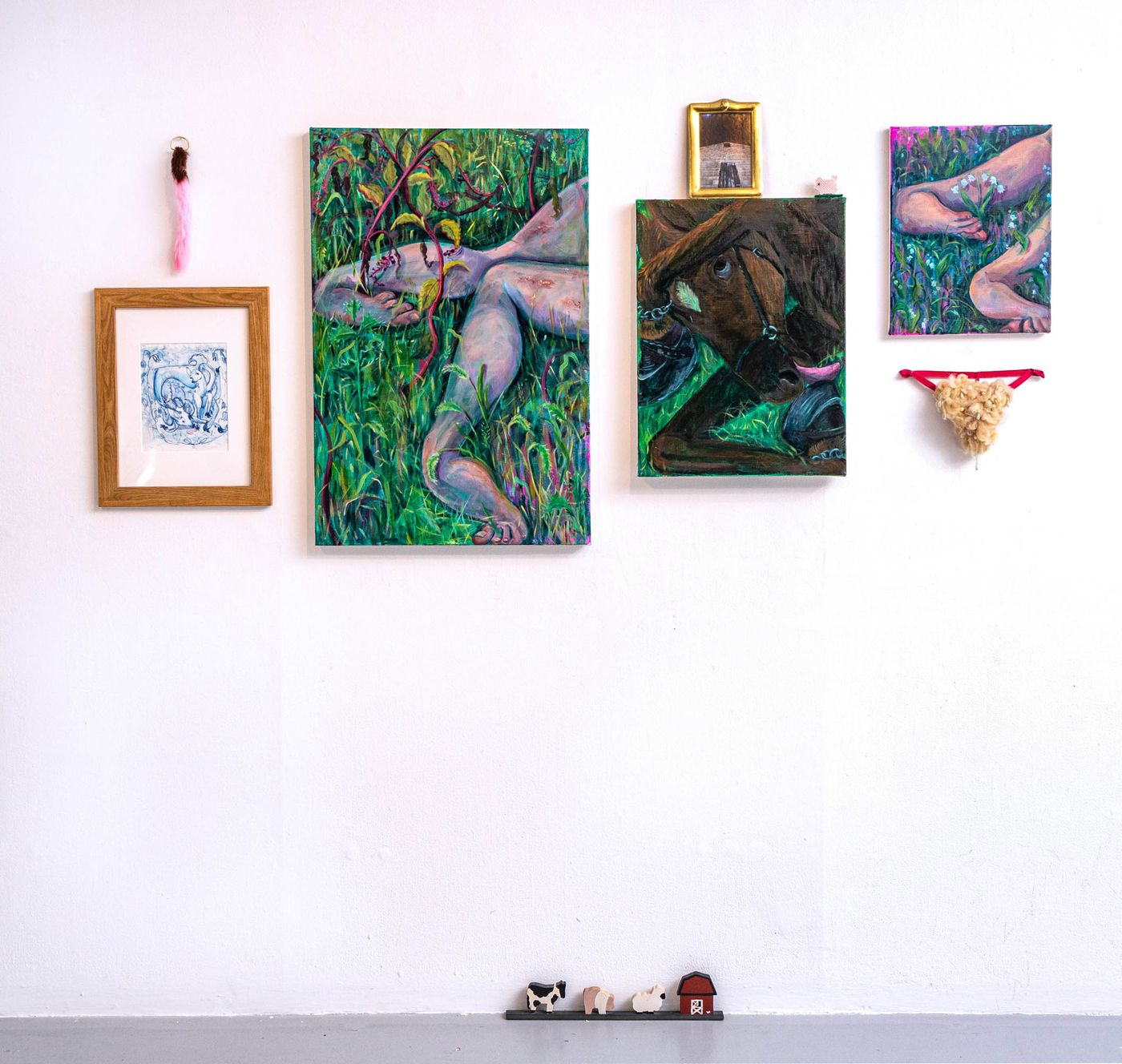
Installation view, 2022. Photo: Meghan Olson.
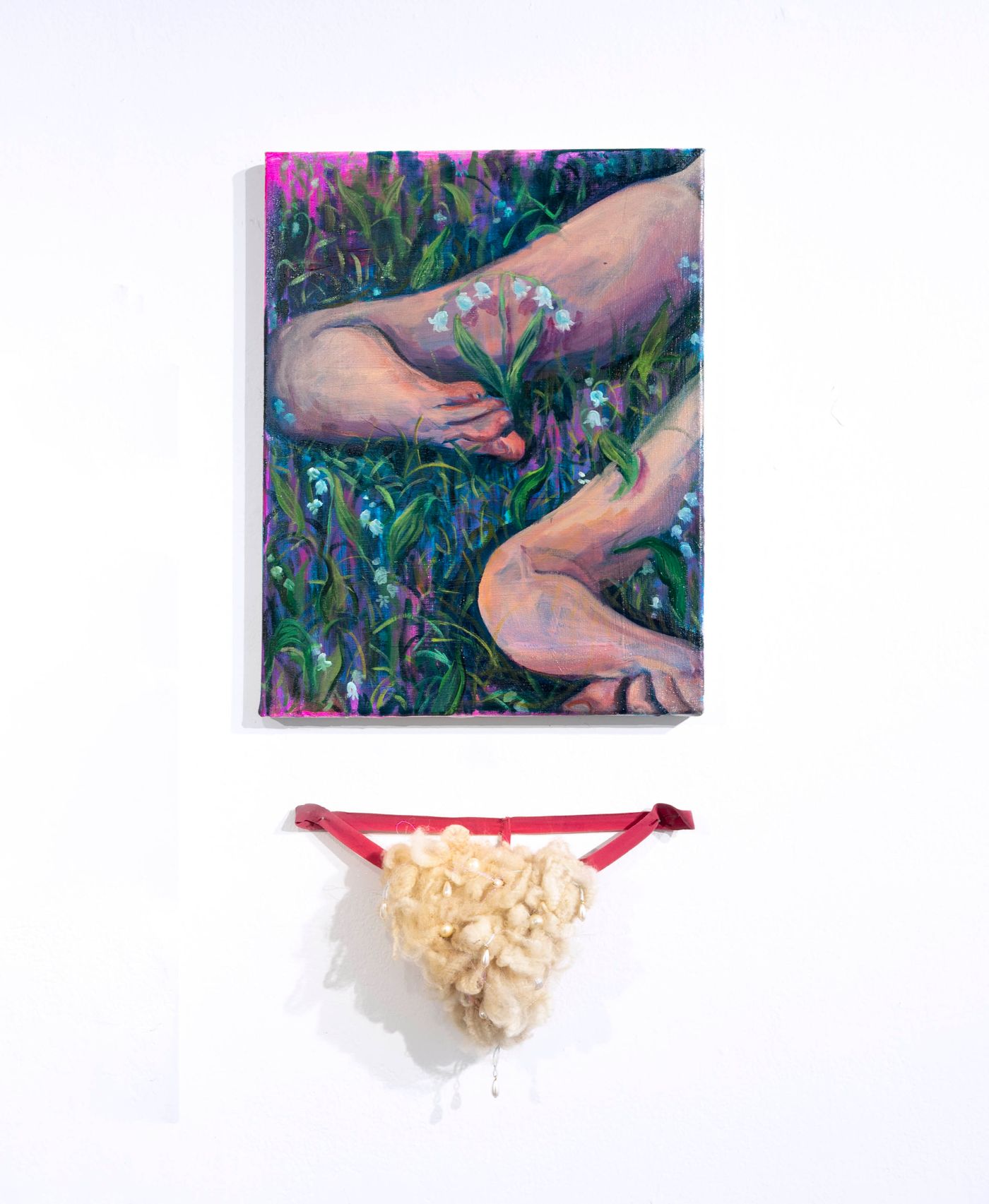
Healing Devotional, 2022. Acrylic and oil on canvas; 13 x 18 in. Sunday’s Best, 2022. Unwashed wool, pearls, fishing line, thong. Photo: Allison Minto.
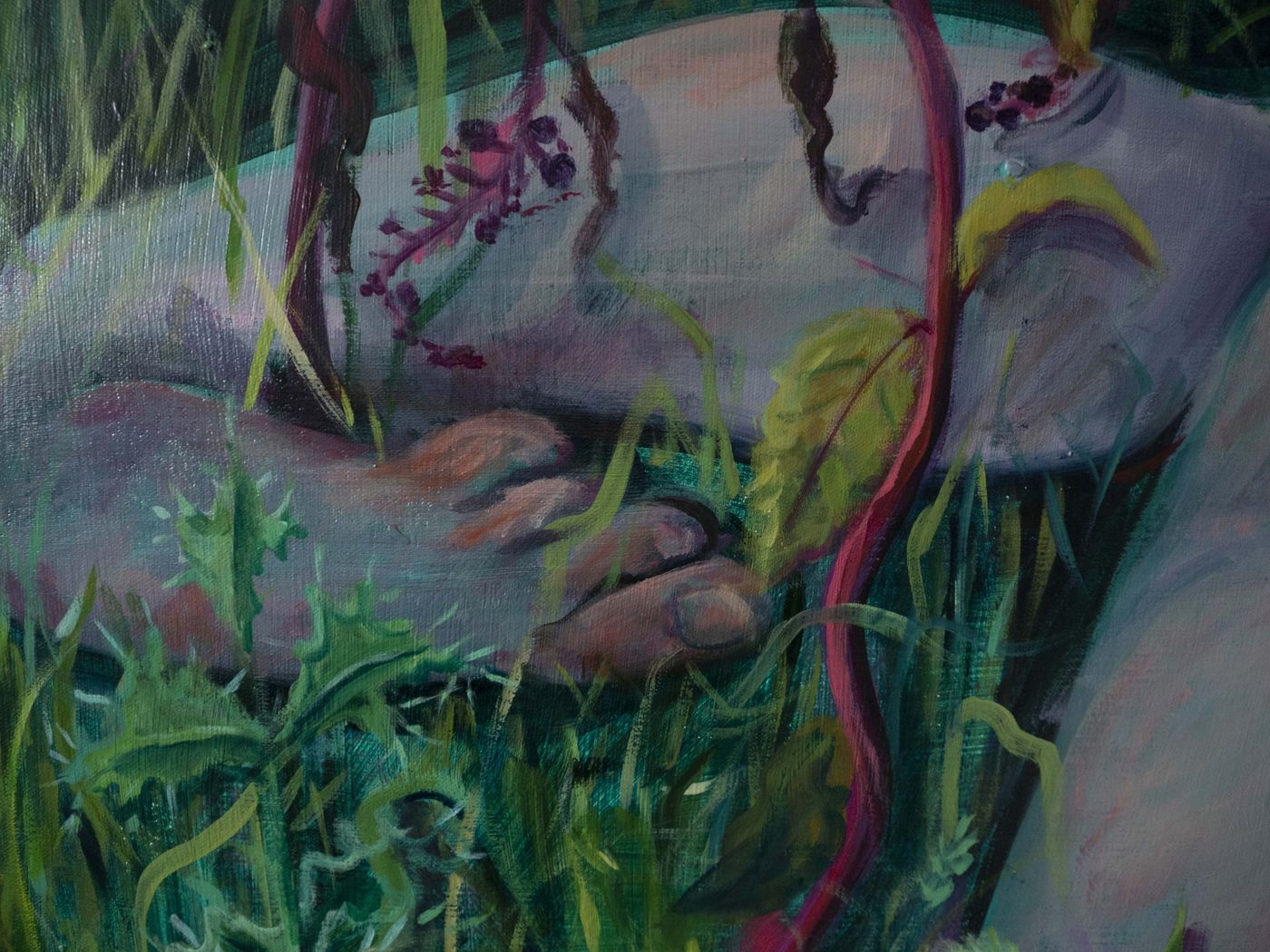
Bloodstopping, a prayer (detail), 2022. Photo: Meghan Olson.
Samantha Joy Groff
b. 1993, Franconia, Pennsylvania
Samantha Joy Groff is a painter from rural Pennsylvania raised in a small Mennonite community. Her figure paintings feature animals, plants, and female subjects enmeshed in a knot of competing desires that fight for the focal point. Her painting practice pits the conservative values of the Pennsylvania Dutch against contemporary ideals of wealth and sexuality through the female experience. These contradictory ideas perform in a space plagued with isolation and Appalachian fatalism. Drawing on the history of rural painters like Andrew Wyeth and Grant Wood, her paintings resist their austere color palettes, stoic figures, and ubiquitous pastoral landscape compositions. Instead, the work indulges in extreme emotional affect, off-kilter colors, and sensual body/land entanglements. The paintings feature scenes that blur the line between narrative, allegory, and taboo to create a more intimate and perverse window into rural life. The figure is bent in unnatural ways to fit the picture plane's impossibly tight composition as the pressure of hard living keeps the bodies confined. Drawing on medieval Christian bestiaries and animal studies research, Groff paints the animal subjects oscillating between bad taxidermy, animal symbol, and realistic rendering. The animal subjects' changing forms evoke the human feeling of a fractured psyche that comes with the relationship of living with and processing animals in agriculture. Her works aim to compress the pastoral and its infinite horizon and zoom into an intimate close-up of dangerous intimacies hiding just past or beneath the surface.